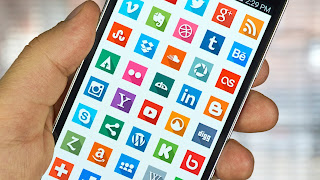Are there any apps gathering dust on your phone or tablet that you can easily get rid of? Certain apps - and in particular games - sometimes take up big chunks of space on your device that you can claim back if you don't use them any more.
Open the Settings app then tap 'Storage' and then 'Apps' to see the worst culprits in terms of taking up space on your Android device, with the biggest disk hoggers at the top. You can't actually uninstall
apps from here though - to do that, go the Apps menu from Settings, tap any of the apps listed, and select 'Uninstall'.
Be careful though - don't uninstall any app that may be holding data you need (such as saved games) if the data isn't already backed up somewhere else.
2. Delete app caches and data
If you want to keep certain apps on your system but cut down on the amount of space they take up, you can delete the cache and databases for these apps.
Again, go to Settings then Storage > Apps and you'll see two options for each one - Clear Data and Clear Cache, together with details of how much space is currently being used.
Clear Data removes personalized data held by the app - it's like uninstalling it and reinstalling it. In the case of Facebook, for example, you'd find yourself logged out; in the case of Spotify, you'd be logged out and all your synced playlists would be gone.
Clear Cache isn't as extreme but won't recover as much space - it just empties the temporary cache of files held by the app so it can start up more quickly, basically bits of the app kept in memory. Clear the cache and the app will launch more slowly the next time you use it, but nothing else should've changed.
3. Delete photos and videos
On a lot of phones and tablets, photos and videos will take up a substantial amount of room - tap Storage and Settings to check on your device.
We'll mention backing up these photos and videos in the next step, but you may find a lot of them can be deleted if you open up Google Photos or your photo management app of choice: do you really need seventeen photos of the same sunset? What about that long timelapse that went wrong? Or all the memes you've been sent over WhatsApp?
As we've said, you can back all this up - but before you do that, do a bit of housekeeping and remove all those blurred, pointless and dull pictures you don't really need.
4. Delete offline TV shows and movies
As with music apps, so with movie and TV show apps - there might be a lot of stuff cached for offline watching you've forgotten about (as we mentioned above, tap Storage then Apps from Settings to see which apps are the biggest space hoggers).
Google Play Movies, for example, lets you download videos for offline watching - if you tap Downloaded only from the app menu you can see the videos saved locally. Select any of them, then tap the menu button (three vertical dots), then choose Remove from device to erase the cached copy. You can always download it again if you need it, or stream a show or film straight from the cloud.
5. Delete data from your browser
Finally, you can give your mobile browser a good clear-out - it's worth a look even if you're unlikely to be able to free up masses of space.
You've most likely got Chrome installed on your Android phone or tablet but other browsers will have similar clean-up options - in fact you can do this job through the clear cache and clear data functions we mentioned a few steps ago, although that method doesn't give you much control over what's wiped and what isn't.
In Chrome, tap the menu button (three vertical dots) then choose Settings, Privacy and Clear browsing data. You can choose what to clear and over which time period, but note that some of the data wiped may be synced between the mobile version of Chrome and other devices where you've got the browser installed.







No comments:
Post a Comment